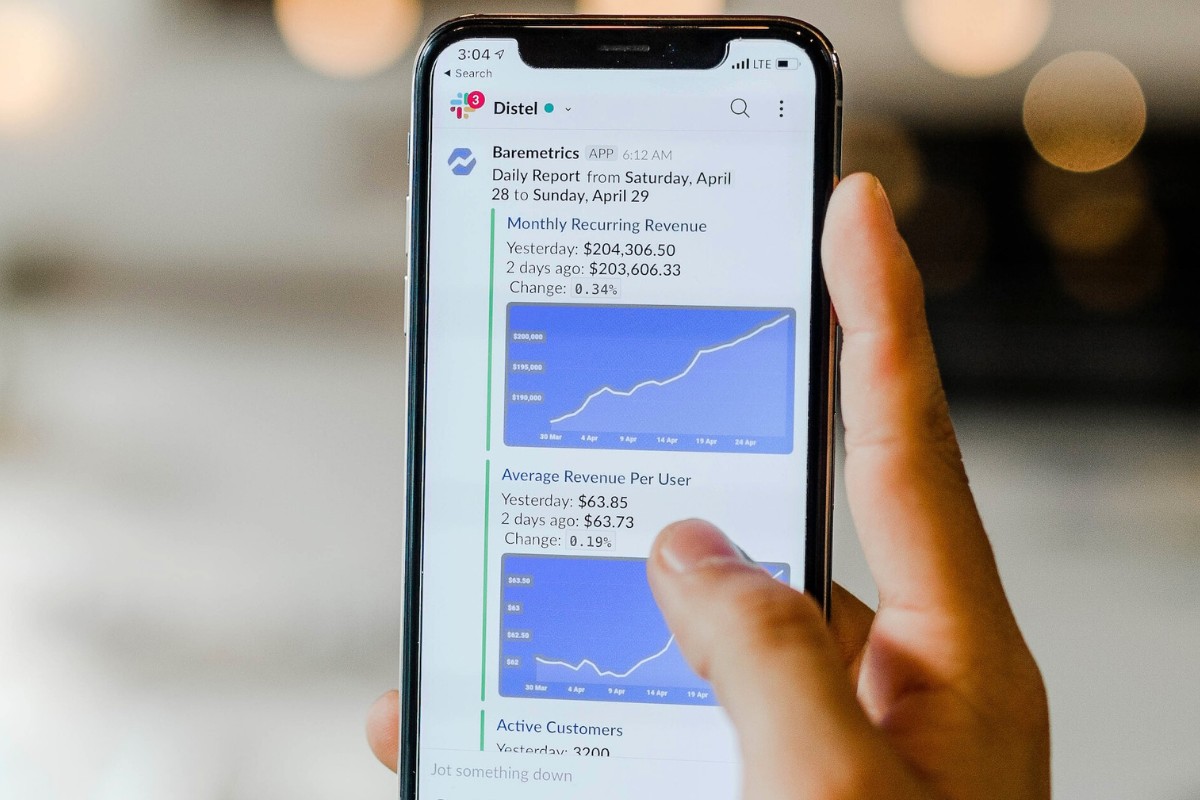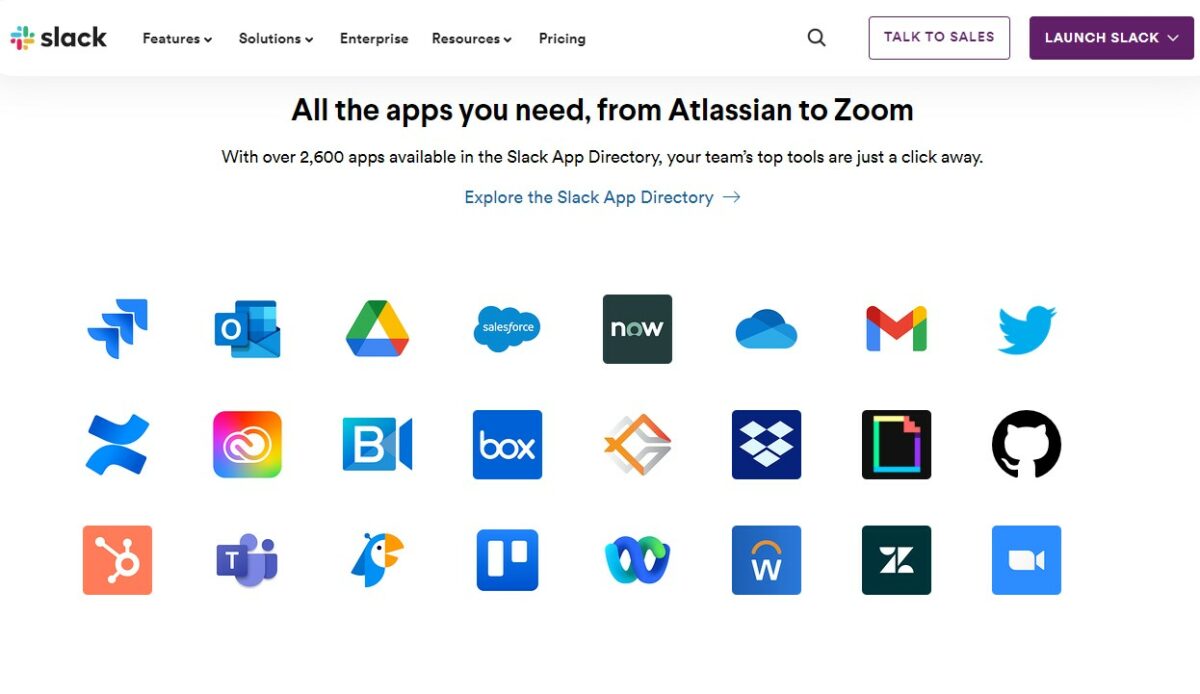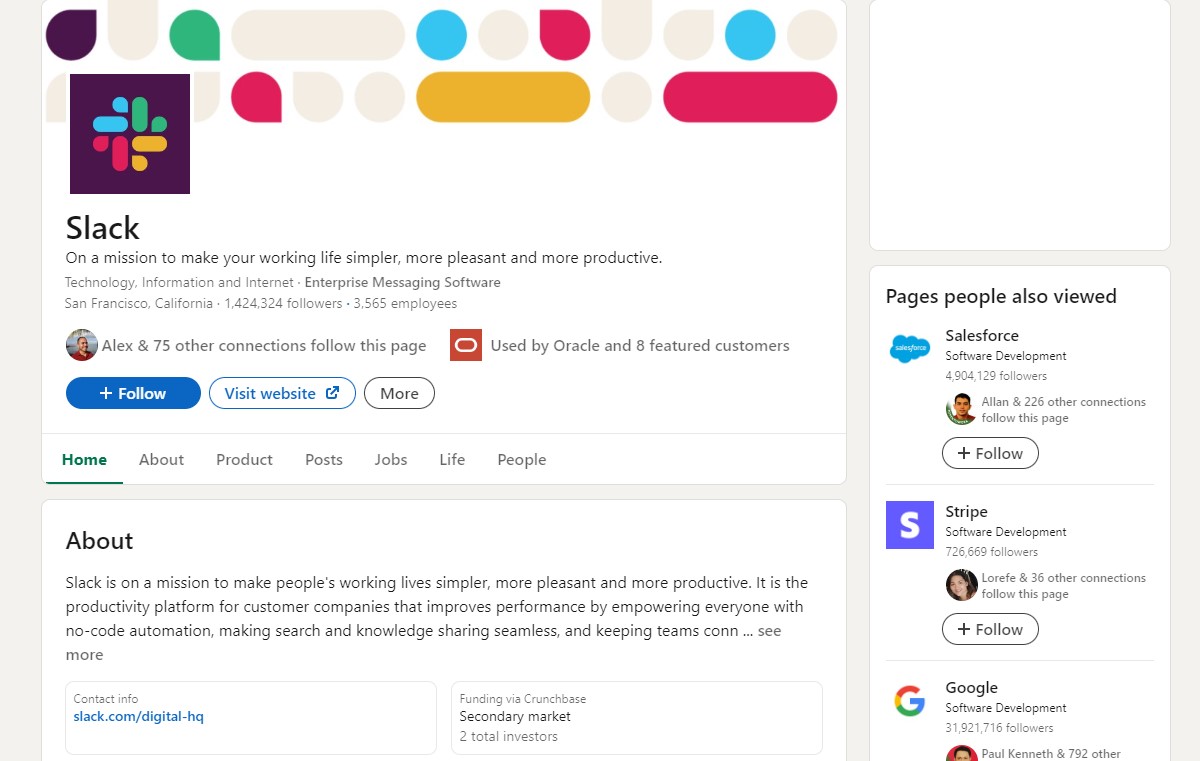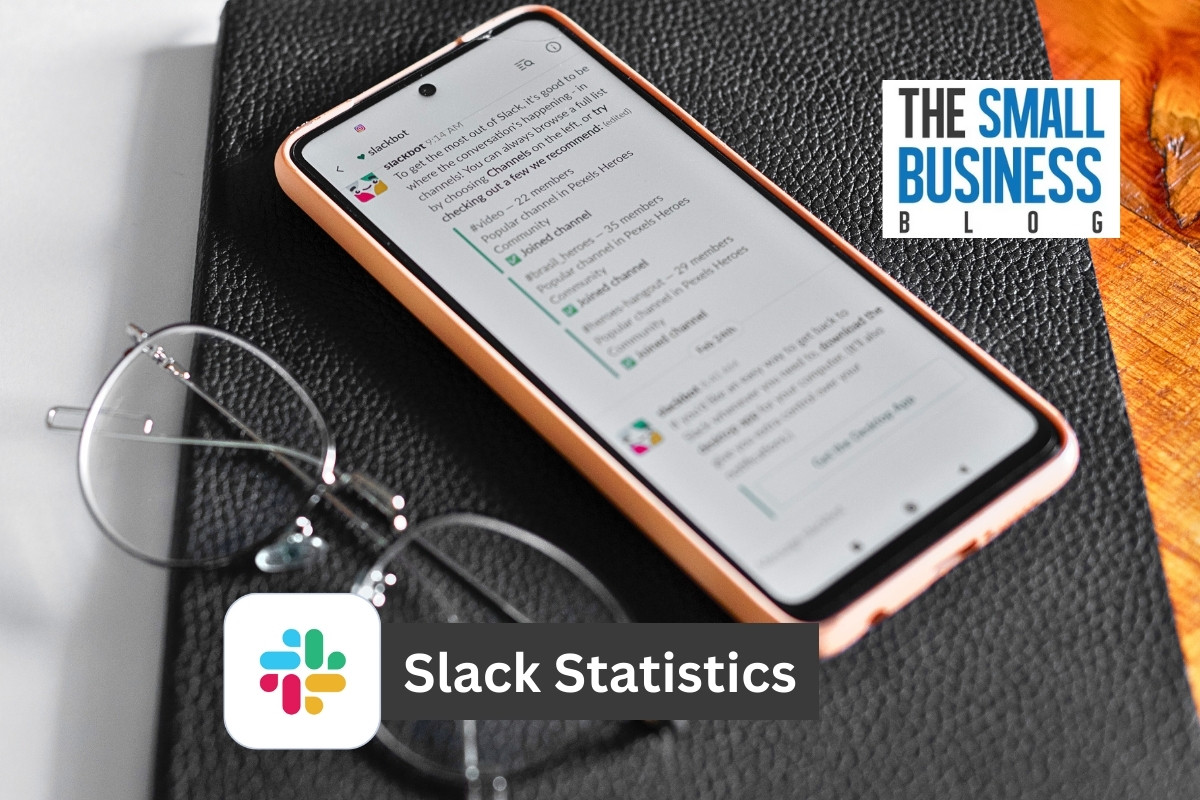Slack was first launched to the public in February 2014.
Its creator, Stewart Butterfield, had already released a game ‘Glitch’, which had failed to attract the necessary interest.
Butterfield chose to stop the game and try something else with the remaining funds.
It was during this process he realized there was potential in the internal communication system he had developed for the Glitch support team.
The result was Slack, it was beta-tested for a year before being released.
As the following Slack statistics show, this was an excellent idea.
Post Contents
- 1 Key Statistics
- 2 A Quick History Lesson
- 3 Top Slack Statistics in 2024
- 3.1 1. 42.7 Million People Use Slack Daily
- 3.2 2. 80% Of Fortune 100 Companies Use Slack
- 3.3 3. The Average Slack User Stays Signed In For 9 Hours
- 3.4 4. Slack Is Compatible With Over 4,000 Apps
- 3.5 5. 600,000 Organizations Use Slack
- 3.6 6. More Than 3 Million People Pay To Use Slack
- 3.7 7. Slack Has Over 2,000 Global Employees
- 3.8 8. In 2021, Slack Was Worth $27 Billion
- 3.9 9. Slack’s Market Share Is 22.75%
- 3.10 10. 46% Of Businesses Using Slack Are Based In The US
- 3.11 11. 25.7% Of Slack Customers Are Within The IT Services Industry
- 3.12 12. 70% Of Employees Feel Additional Tools Make Work Easier
- 3.13 13. The Adoption Of Slack In Companies Is Driven By Customer Service Needs
- 3.14 14. Slack Earned $902 Million In 2021
- 3.15 15. Over 156,000 Businesses Pay To Use Slack
- 4 Summing Up
Key Statistics
- 42.7 million people use Slack daily
- 80% of Fortune 100 companies use Slack
- The average Slack user stays signed in for 9 hours
- Slack is compatible with over 4,000 apps
- 600,000 organizations use Slack
- More than 3 million people pay to use Slack
- Slack has over 2,000 global employees
- In 2021, slack was worth $27 billion
- Slack’s market share is 22.75%
- 46% of businesses using Slack are based in the US
- 25.7% of Slack customers are within the IT services industry
- 70% of employees feel additional tools make work easier
- The adoption of Slack in companies is driven by customer service needs
- Slack earned $902 million in 2021
- Over 156,000 businesses pay to use Slack
A Quick History Lesson
Less than one year after its launch, Slack had generated 500,000 users, an impressive start.
Near the beginning of 2016, voice calling was introduced on Slack and by the end of 2016 the application had over 5 million users!
Threaded messages were introduced in 2017.
This was followed in 2019 by Interop, allowing Slack, Microsoft Teams, and Webex to interact seamlessly.
In the same year, a Slack add-on for Gmail and Office 365 was released.
2019 also saw the release of shared channels, the workflow builder, and it integrated with Zoom phones.
The result was 20 million followers by January 2020.
Slack continues to develop and integrate with more services, making life as easy as possible for users.
That’s one of the reasons it has become so popular and one of the most commonly used business communication apps on the market.
Top Slack Statistics in 2024
1. 42.7 Million People Use Slack Daily

The exact number of Slack users has not been disclosed.
However, it is much easier to use than email and provides a faster response.
Alongside this, Slack has been designed to integrate with as many apps as possible, making it the perfect companion for almost any office space.
This is particularly relevant when it connects to some of the biggest programs in the industry, such as Google and Salesforce.
Slack is also designed to give full access to old conversations, ensuring any important information sent can be accessed and re-accessed whenever needed.
All these features make the app extremely popular, which is why current estimates suggest at least 42.7 million people are using the app every day.
That figure is likely to increase.
(Demand Sage)
2. 80% Of Fortune 100 Companies Use Slack
The companies which make the Fortune 100 company list are deemed to be the most successful and profitable businesses on the planet.
They have generally been established for many years and have an excellent customer reputation.
Impressively, the latest statistics suggest that 80% of these businesses are using Slack.
That means 80 of the world’s most profitable businesses trust Slack for internal communications.
In general, Slack is being used by these businesses to facilitate communication within the company, specifically to and from the digital headquarters.
Slack values the privacy of its customers highly, which means it’s impossible to know which Fortune 100 companies are using Slack.
However, it is known that businesses such as Apple, General Motors, and even Walmart rely on Slack.
That’s a huge testimony to the skills and expertise offered by Slack.
(Earth Web)
3. The Average Slack User Stays Signed In For 9 Hours
Unlike some applications, Slack is designed to be logged into and left open all day.
This makes it easy for users to check messages and information.
It also ensures they are notified when a new message is received.
During this time, Slack won’t automatically log you out, meaning it’s the perfect way to stay in contact and be available when needed, regardless of where you are working from.
According to Demand Sage and Slack statistics, the average Slack user will sign in at the start of their day and stay logged in for the next 9 hours.
That doesn’t mean they are using Slack all day, the statistics show that the app is used, on average, for 1.5 hours a day.
For many businesses Slack has become the primary method of communicating with remote staff, hence the need for the app to be left open, making the staff accessible all day.
(Demand Sage)
4. Slack Is Compatible With Over 4,000 Apps

According to the latest statistics released by Slack, there are over 4,000 apps which Slack can be effortlessly used in conjunction with.
Apps which can be linked are all designed to facilitate communication in one way or another.
This includes apps like Giphy which allows you to send animated GOFs to team members.
Another popular app is Polly, which allows you to create polls and surveys on Slack, helping you and the team to know what is going on.
Of course, Slack also integrates with Google Calendar, allowing you to plan team events.
It is also compatible with Zoom, allowing you to start a Zoom meeting from within the Slack app.
The aim of all these apps is to make it easier for teams to work together and get the best possible results.
Today, there are over 4,000 apps compatible with Slack, this number is certain to increase, potentially meaning there will be 10,000 compatible apps by 2028.
(Slack)
5. 600,000 Organizations Use Slack
According to the latest Slack statistics, there were over 600,000 organizations using Slack in 2021.
The majority of these, 550,000 to be precise, were subscribed via the free plan.
However, approximately 88,000 businesses had subscribed to the paid versions.
There isn’t a breakdown of subscriptions to identify which were using Pro and which had chosen Business+.
It’s worth noting the price of Slack varies depending on which subscription you want, the number of users, and how much you are likely to be billed by the app.
In short, every organization can tailor the cost to their own needs.
On average, the daily cost per user is approximately $7.
As Salesforce focuses on growing Slack and increasing the number of paying customers it’s likely this daily cost will rise.
The number of users is certainly going to increase rapidly.
(Slack)
6. More Than 3 Million People Pay To Use Slack
Slack is free to download and start using.
Yet, despite this, according to the latest statistics from Slack, over 3 million people have chosen to pay for Slack services.
This illustrates how effective the app can be within an organization.
While the free version is a useful tool, paying for a subscription version gives you access to an array of additional tools.
Slack can be installed in one of three versions: Free, Pro, and Business+
Pro and Business+ both give unlimited storage and message history.
The free version only lets you see files and messages from within the last 90 days.
The free version also only allows you to integrate with 10 other apps.
There’s no limit with Pro or Business+.
That’s just a tiny glimpse at the array of features available with a subscription.
Once you realize how many features are available you’ll understand why, for a business, a subscription is a worthwhile investment.
(Slack)
7. Slack Has Over 2,000 Global Employees

This statistic isn’t surprising.
In fact, for a company that looks after so many Fortune 100 companies, the number of employees may seem a little on the low side.
According to the latest statistics Slack has 2,045 employees.
These employees are located in various places across the globe.
Many work from home and they all stay connected via the Slack software.
It’s interesting to note that Slack looks for a very specific set of qualities in its employees.
Specifically, they want them to be creative, playful, and to offer support to each other.
The result is all Slack employees are supported and can get the answers they need from more senior colleagues, regardless of what time of day or night it is.
As Slack continues to grow it’s likely that the number of employees will grow, although not as quickly as you may think.
The current team already does a good job!
Slack is based in the US, that’s where the company headquarters are.
However, it also has offices in Melbourne, Paris, London, Istanbul, Tokyo, Toronto, and several other US-based offices.
(Earth Web)
8. In 2021, Slack Was Worth $27 Billion
Surprisingly, Slack has still not made a profit.
However, its net loss for the year has reduced significantly in recent years, this is a large part of why the company is so valuable.
In 2017 the net loss was just $146 million.
This came down to $138 million in 2019.
However, the pandemic hit and the net loss climbed to $567.
What’s interesting about this is that the pandemic forced people to use remote communication systems like Slack.
Unfortunately, most people chose to use the free version, placing more strain on the app without generating more profit.
Fortunately, the company is recovering well and posted a net loss of $292 for 2021.
It seems likely that this will turn into a profit in 2023 or 2024.
This has helped to boost the value of Slack which, according to the latest figures, is $27 billion as of 2021.
That’s a long way from the $1.1 billion the company was valued at in 2017!
In fact, this valuation highlights how much promise Slack has, it’s higher than the pre-pandemic valuation of $23 billion.
It should be noted that $27 billion is what Salesforce paid for Slack in December 2020.
(Statista)
9. Slack’s Market Share Is 22.75%
Slack operates in a directly competitive field.
Remote communications are becoming increasingly important to businesses, particularly as many people have opted to continue remote working.
The result is even the most established companies are facing competition from an array of businesses.
Fortunately for Slack, they are currently dominating the market.
According to the latest figures Slack has a 22.75% market share.
In contrast, one of its major competitors, Microsoft Teams, has just a 2.25% market share.
What is perhaps most impressive about this statistic is that Microsoft Teams was launched very quickly after Slack.
Microsoft Teams obviously had the financial and reputational advantage associated with a Microsoft product.
Despite this, and Teams potentially having more users, Slack still has the larger market share, showing just how good the app has been right from the start.
(Earth Web)
10. 46% Of Businesses Using Slack Are Based In The US
Slack is currently available in over 150 countries, that’s approximately half the countries on the planet.
However, the company was started in the US and is still headquartered in the US.
Alongside this, it has several American offices.
This makes it less surprising that American businesses are the ones that use Slack the most.
According to the latest figures, 46% of Slack’s customer base is located in the US.
The second largest customer base for Slack is the UK, with 8.4% of its customers coming from the UK.
It should be noted that the majority of US-based Slack customers are international companies, meaning that they use Slack in various countries across the globe.
Although the UK is Slack’s second biggest customer base, the app is one of the least favorite in the country.
That’s because most individuals are looking for a free app, such as WhatsApp.
Slack offers a free service but is targeting businesses and paying customers.
(Statista)
11. 25.7% Of Slack Customers Are Within The IT Services Industry

Slack is a popular business app but it is particularly popular within the IT services and computing sectors.
According to a report completed by Actioner in 2021, 25.7% of Slack customers are based in IT services.
A further 24% are based in computer software!
That means roughly half of its customer base is related to the computer industry.
The report also showed that 14.8% of its customers are in marketing and advertising, while 11.6% are internet-related organizations.
Just 5.1% are based in financial services, and 5% in retail organizations.
Design companies form just 3% of Slack’s customer base and a further 3% are in NPO management.
It’s definitely a business-orientated customer base.
It’s worth noting that IBL has over 300,000 employees and uses Slack.
This makes it Slack’s largest customer.
Other big businesses which use Slack include Amazon, Canva, and even Gymshark.
(Actioner)
12. 70% Of Employees Feel Additional Tools Make Work Easier
According to Slack’s own reports, an impressive 70% of employees feel that the right tools added to an app will make life easier.
Naturally, anything that allows employees to focus on what matters, instead of the process, is welcomed by businesses.
However, the biggest problem with many tools is that they need to be switched between them.
That means minimizing one and opening another, perhaps even closing it to reopen and link it properly.
This is time-consuming and negates the value of the tool.
Slack has dealt with this by creating Slack Apps Suite.
All the apps are available through Slack and can be instantly integrated.
Using the desired apps then becomes effortless.
This is highly valued by employees and, therefore, employers.
As previously mentioned, you can only integrate 10 apps with the free version of Slack, but there is no limit if you use Slack with a paid subscription.
(Slack)
13. The Adoption Of Slack In Companies Is Driven By Customer Service Needs
According to a report compiled by Forrester Consulting, on behalf of Slack, 70% of organizations surveyed have adopted Slack in an effort to improve customer service.
Surprisingly, 64% of organizations felt Slack could improve the customer experience, while 49% of businesses believe it can improve cost efficiency.
Impressively, 44% of businesses are now using Slack to help improve the organization within the company.
Other major reasons for adopting Slack include improving communication and encouraging better employee engagement.
42% and 34% of businesses agreed with this.
Just 19% of organizations felt Slack would help them improve product efficiency or help with leadership change.
Perhaps the most interesting fact about these statistics is that the adoption is primarily driven by improving customer service.
This is fundamental for business success and yet many organizations failed to grasp this before the global pandemic.
(Forrester Consulting)
14. Slack Earned $902 Million In 2021
The majority of Slack’s income comes from subscriptions and add-ons.
Slack has been steadily building its paying customer base, improving its revenue figures in the process.
However, a large chunk of its revenue comes from users of the free Slack.
The product may be free, but it has limited functionality.
Many businesses are happy to pay for a few add-ons to get the product they need.
Of course, this can be more expensive than signing up for standard subscriptions but businesses don’t always realize this.
The increased interest in Slack and associated add-ons means the company took $902 million in revenue in 2021.
That’s an impressive $270 million more than Slack earned in 2020.
Now that Slack has been purchased by Salesforce you can expect to see the revenue climb steeply.
Salesforce is expecting Slack to earn $1.5 billion in 2023.
(TechReport)
15. Over 156,000 Businesses Pay To Use Slack

Slack is used by hundreds of thousands of organizations for free.
It’s also a business and needs to earn money.
The primary way it achieves this is to provide membership options.
You pay to become a member at a certain level and get the associated benefits.
It’s simple yet surprisingly effective.
As of 2021, Slack had 156,000 paying customers.
It’s likely that this number has increased since, although no reports have been supplied yet.
It’s certainly an impressive number increase.
In 2017 Slack had just 50,000 customers.
This increased to 60,000 in 2018 and then 88,000 in 2019.
In the last few years numbers have been climbing faster.
In 2020 the company hit 112,000 paying customers.
However, the biggest increase has been since Salesforce took over.
An impressive 44,000 new paying customers signed up during 2021 to give a grand total of 156,000 paying customers.
In terms of organization numbers, Slack statistics show the business has over 750,000 organizations using its services in 2020.
Of course, the majority of these use it for free.
The number was just over 600,000 in 2019 and a paltry 30,000 in 2014, less than ten years ago.
(Company Data)
Summing Up
Slack has become a popular app partly because it’s free.
However, there is more to it.
As the above Slack statistics show, this is a company that addresses the needs of businesses and helps them elevate their product quality and customer satisfaction.
The future of Slack is a little uncertain as it’s been bought by Salesforce.
Early indications are that they intend to improve and grow Slack.
To do this successfully, they will need to maintain helpful, customer-based, service levels.
Only time will tell if this is the case.
However, the statistics show that Salesforce is moving in the right direction.
You may want to start using Slack today, it’s likely it will become an even bigger force in the industry.






























